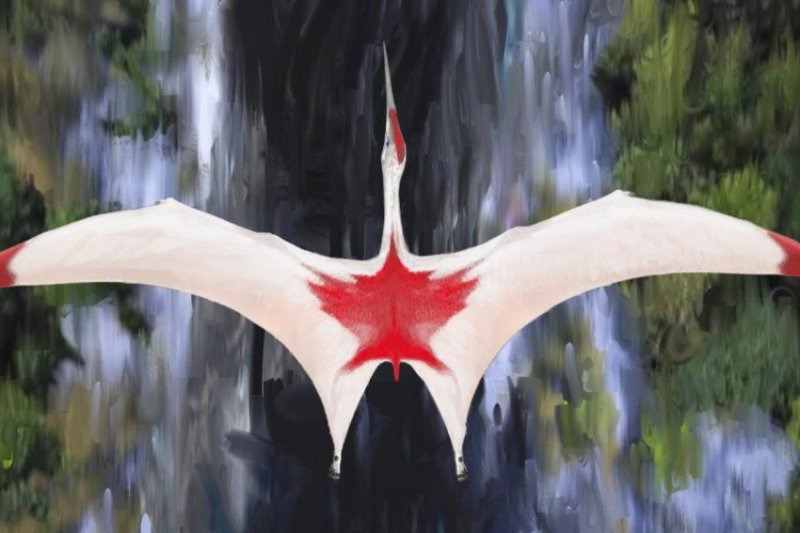An illustration of Cryodrakon boreas, one of the largest known flying animals. Photo by
David Maas
Sept. 10 (UPI) -- Scientists have given a name to one of the largest animals to ever take to the skies. Cryodrakon boreas, a member of the Azhdarchid group of pterosaurs, boasted a wingspan of nearly 33 feet.
The 77-million-year-old remains of the Cretaceous reptile were found in Alberta, Canada, 30 years ago, but remained misidentified until recently. Originally, paleontologists assigned the fossil to Quetzalcoatlus, a Late Cretaceous pterosaur.
"We didn't have many other good fossils of Azhdarchid pterosaurs to compare it to, and in particular, we didn't have -- and still don't -- a good description of Quetzalcoatlus," David Hone, lead author of the study from Queen Mary University of London, told UPI in an email. "It's hard to compare it to something you don't know much about."
Over the years, paleontologists have collected additional Quetzalcoatlus bones. When scientists reexamined the Cryodrakon boreas remains, comparing them to the Quetzalcoatlus fossil record, they were able to identify subtle differences between the different bones.
The neck bones of the newly named species are shorter and wider than those of its closest relatives.
"Cryodrakon boreas has an extra pneumatopore, a hole that penetrates the bone, at each end of each neck bone that Quetzalcoatlus doesn't," Hone said. "The arrangement and number of these pneumatopores is key to telling it apart from other pterosaurs."
In total, researchers have recovered bones belonging to several Cryodrakon boreas specimens, but the most complete remains belonged to a young pterosaur. Scientists were able to use their knowledge of other pterosaur species to estimate the size of a mature adult.
"Azhdarchids have fairly consistent skeleton proportions so we can take even some isolated bones and compare them to other better skeletons and scale up or down accordingly," Hone said. "In the case of the juvenile, there's a good number of bones present so we're pretty confident in that estimate."
Though Azhdarchids could fly across oceans -- members of the group have been found in Cretaceous deposits in North America, South America, Asia, Africa and Europe -- they were uniquely adapted to inland settings. The discovery of the new species, published this week in the Journal of Vertebrate Paleontology, offered scientists additional proof of the group's impressive diversity.
Scientists estimate that, like its relatives, Cryodrakon boreas preyed on lizards, mammals and baby dinosaurs, but differences in its anatomy suggest the species may have behaved differently than its relatives.
"We do see that it has a more robust neck and thinner humerus than Quetzalcoatlus, so it's probably not operating in exactly the same way ecologically speaking," Hone said. "But we don't know what that might mean."















